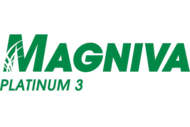When it comes to silage, the first cut of grass is like the foundation of a well-prepared meal. Just as quality ingredients are essential for a delicious dish, the initial grass silage you harvest sets the stage for on-farm profitability. But here’s the catch: even though first-cut grass boasts excellent sugar and protein content, it doesn’t automatically translate into high quality grass silage.
MAXIMIZING QUALITY
- The Recipe for Success
Creating high-quality silage involves meticulous management — from the field to the storage bunker. Cutting corners, such as skipping the use of a silage inoculant, can lead to disappointing results. Imagine preparing a gourmet meal with the finest ingredients but neglecting proper cooking techniques. The meal might be disappointing or even unpalatable. The same is true when trying to make consistently high quality first-cut silage.
- Why Treat First-Cut Silage?
Your first-cut grass typically outshines subsequent cuts in terms of nutritional value and yield. Its impact on farm profitability cannot be overstated. So, why risk compromising your hard work by forgoing treatment with a silage inoculant?
- Dry Matter (DM), Matters
First-cut grass forage tends to have lower DM content than later cuts, making it more susceptible to spoilage during fermentation and feedout as it presents challenges during the silage-making process. Increased protein content, while beneficial for feeding, can hinder an efficient fermentation. Untreated silage may ferment slowly, resulting in reduced sugar levels, protein content, digestibility and overall palatability. Such losses can significantly impact your farm’s bottom line making the addition of a silage inoculant a sound investment.
- Storage Considerations
Storing later cuts of silage atop of the first cut grass silage introduces additional complexities. Essentially, you’re exposing the entire silo to air, creating an environment ripe for undesirable microbial growth. To mitigate these risks, consider using a product like MAGNIVA Platinum. Treating your first-cut silage ensures better preservation and minimizes the chances of heating and spoilage when storing subsequent cuts in the same silo.
In conclusion, treating first-cut silage with MAGNIVA silage inoculants isn’t just good practice—it’s a recipe for success. Don’t let your hard work go to waste; invest in high quality silage from the very beginning.






